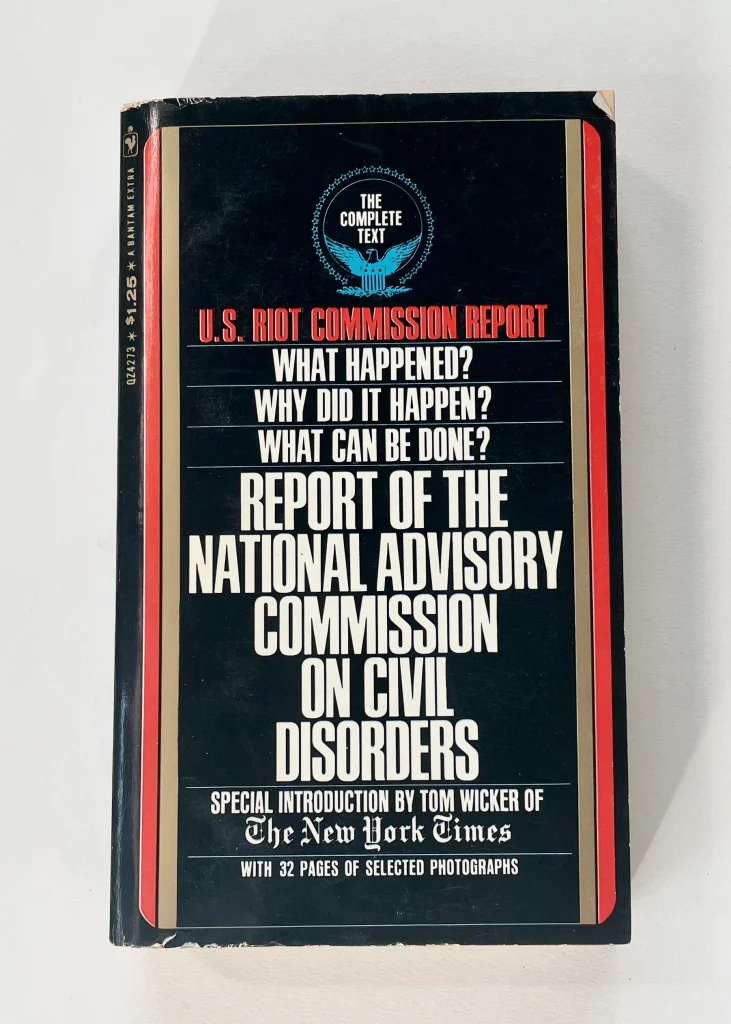When we think of some of the most important milestones in America’s civil rights movement, rarely do people talk about “The Kerner Report.”

In a conference room in the John Hope Franklin Center, I sat amidst a gathering of curious people, and at the front of the room was Rick Loessberg, the author of “Two Societies: The Rioting of 1967 and the Writing of the Kerner Report.” If you couldn’t tell from Loessberg’s contagious smile, you could certainly tell from his extensive knowledge that he was excited to be introducing us to this report, which looks at the causes of the 1967 civil rights riots.

Giving us some background history, Loessberg first acknowledged the importance of the very building we were all in. The John Hope Franklin Center, where Dr. John Hope Franklin held an office and worked until he died in 2009, was built in 2001 to create a space for everything Dr. Franklin believed in–a welcoming environment that encouraged considerate debate and discussion. Dr. Franklin was also known for writing the 5th chapter of “The Kerner Report,” which connected African American’s history in the United States and their riots in 1967. As I sat in the conference room, I couldn’t help but feel the weight and proximity of the building’s history emphasizing the importance of Loessberg’s discussion.
Loessberg then began to explain the catalyst for creating “The Kerner Report,” enumerating the tragedies of the riots in 1967. On July 23, 1967, Detroit Police raided an after-hours nightclub. The raid quickly turned violent, and the civilians in the city did not let this go unnoticed. The following five days were marked by extreme violence, with 43 people killed, over 7200 arrests, and 600 fires started. It wasn’t until 5,000 elite paratroopers came into Detroit that the riots finally stopped.

In response to this, Lyndon B. Johnson created a commission of 11 members, which examined FBI reports, studied the attitudes of 13,000 people who had been arrested, and looked at U.S. Census data to discover why the riots were happening. The Census concluded that the rioting was not the fault of what the majority of Americans believed–the rioters were “losers,” “communists,” you get the point–but instead, the riots were a reaction to the years of discrimination and racism that Black people had been facing throughout their lives (which though not surprising to many today, was an incredibly progressive conclusion for the 1960s).

Additionally, “The Kerner Report” found that most of the people rioting had gone to school, had jobs, and did not have arrest records–findings that went against the stereotypes white people assigned to the rioters. The bravery of these successful people willing to risk everything in order to riot against what they knew was wrong stood out to me (however, not to say that violence should ever be encouraged). I also found it quite surprising how successful “The Kerner Report” was, given the lack of knowledge on it today, with over 1 million copies being sold in the first week.
Here are five key points “The Kerner Report” can teach us if implemented in today’s time, Loessberg said:
- Be courteous: During the creation of “The Kerner Report,” the commission always made sure to have appropriate discussions, never name-calling or blaming, similar to what we see in politics today.
- Focus on what everyone has in common: The commission worked hard to make sure that everyone’s voice was heard. They addressed everyone’s concerns, and even if they couldn’t explicitly “fix” their concern, by holding a space where people could voice their upset, the commission was more successful at creating a report most approved of.
- Know how to read the room and when to temporarily regroup: The commission was very aware of when they would get stuck in arguments rather than discussions, and because of this, they were able to acknowledge that they needed to regroup and try to tackle the issue again.
- You don’t have to win every argument: Being successful alone doesn’t make a group or society successful. The Kerner Commission knew this and always kept this in mind when researching and writing the report. Because of that, not one person was in charge of the narrative, allowing for the narrative to be a collection of ideas.
- “The Kerner Report” can apply to all work settings and relationships: By observing how to tackle systemic issues and address the country about such things, we can learn about how to approach this issue today, both at large and in smaller settings. Every relationship needs respect and a facilitation of conversation to be successful.
Moving forward, Loessberg said that we must have proper education about the impacts of systemic racism on the Black community. Additionally, and something I found quite interesting because I have never heard before, Loessberg said that there is a need for a wider variety of terms that mean racist–arguing that the fact that KKK members in white sheets are called racists just as the white cashier who has inherently racist actions is racist does not allow for a deeper understanding of systematic racism.

As I looked around during the final Q&A, I saw people from all different backgrounds facilitating respectful discourse–something I can’t say I see often. When I asked if Loessberg believed this text should be taught in schools if allowed, he answered, agreeing that (absolutely) “The Kerner Report” should be in schools today, but unfortunately “…it would be accepted as critical race theory,” meaning it would not be allowed in schools today. As others asked questions, I began to put into words what I had been observing throughout this entire presentation and discussion; even when opposing opinions were shared, everyone could eventually come together to agree on one thing–How the United States is today is in need of fixing, and “The Kerner Report” can provide insightful and guiding information if implemented correctly.

